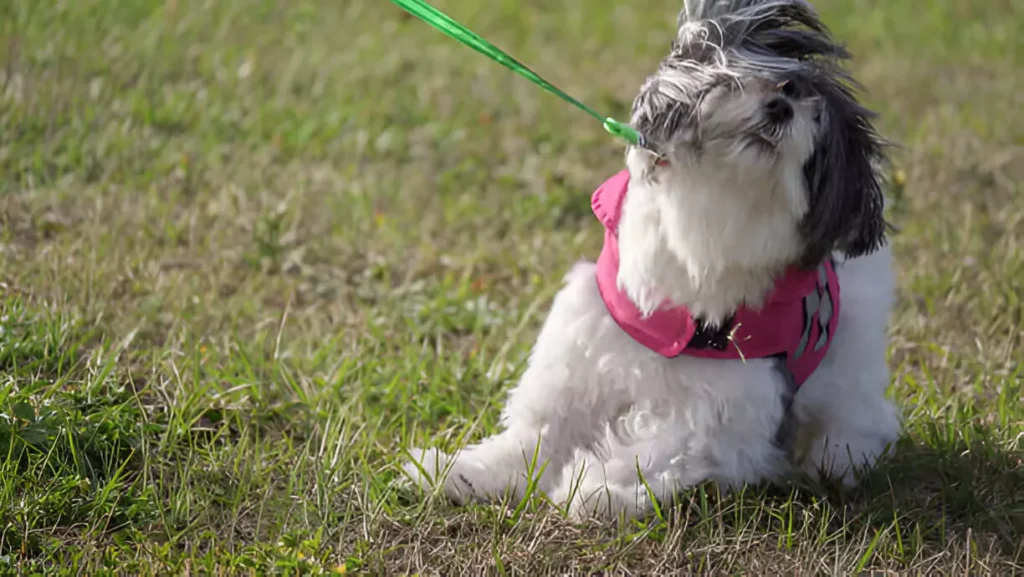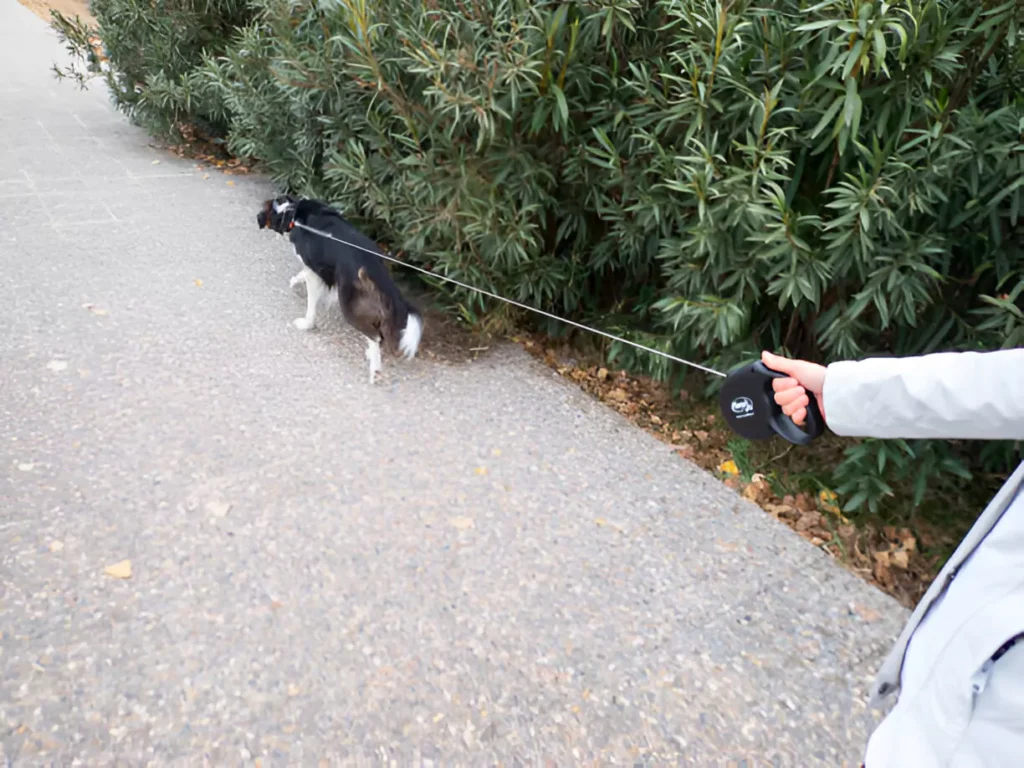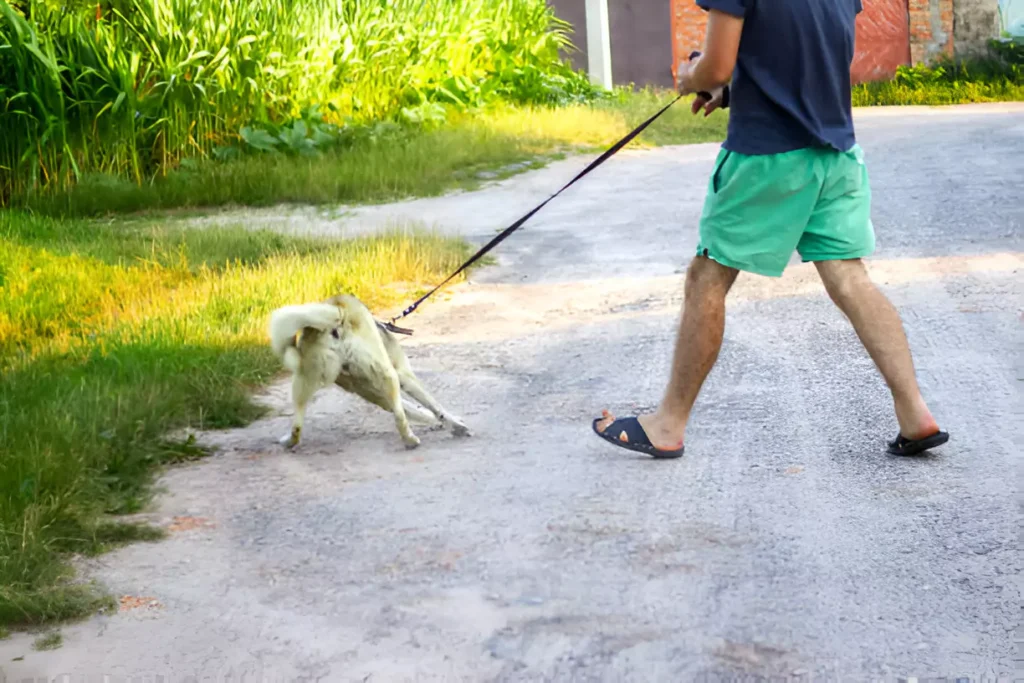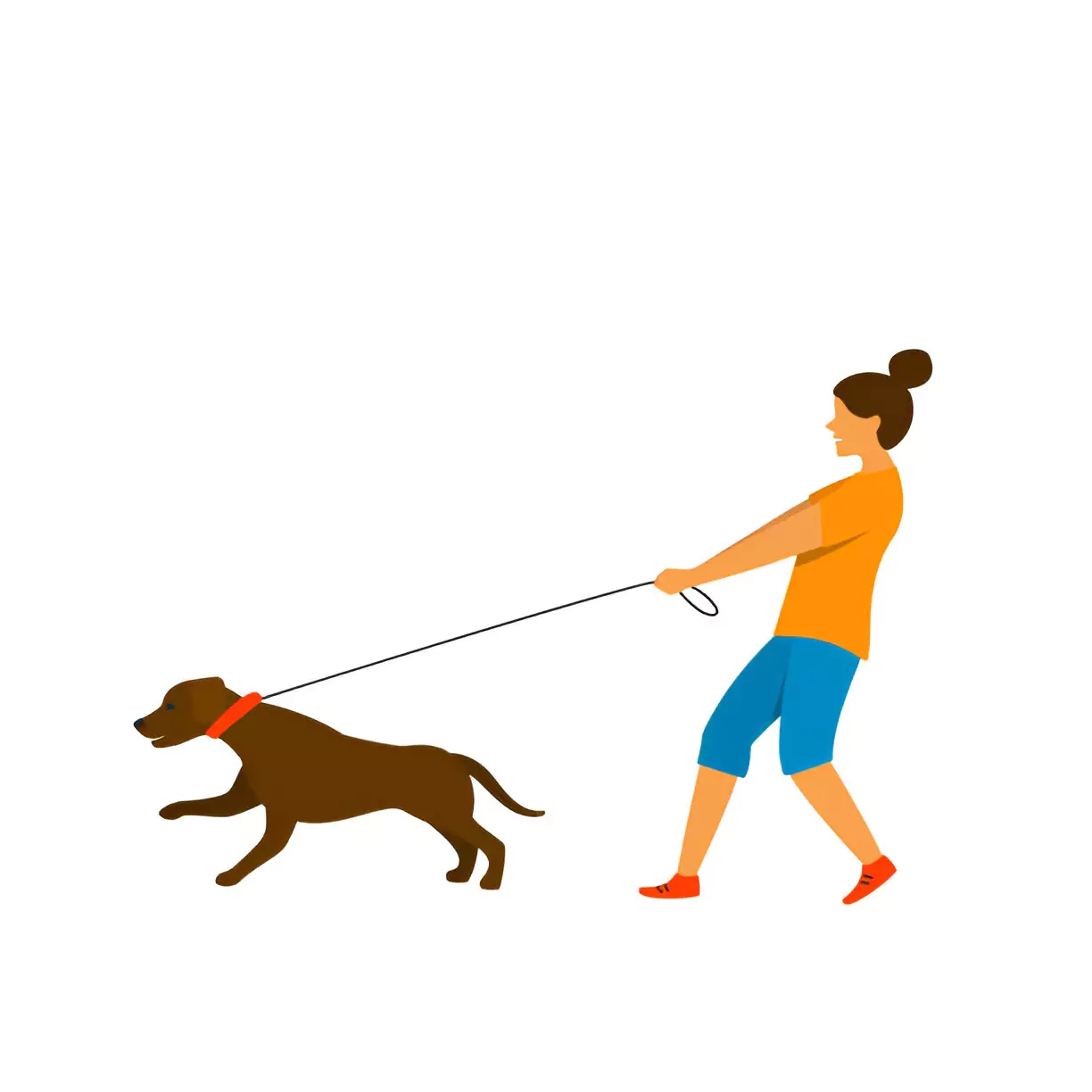By Valli Aman, Certified Obedience Specialist. Reviewed by Erik Prins, ADAB, CCAB.
10-Minute Read
Walking your dog should be a fun and enjoyable activity for both of you, but if your dog is constantly pulling on the leash, it can turn into a frustrating experience.
Whether you’re dealing with a puppy or an adult dog, leash pulling is one of the most common behavior problems dog owners faces.
Fortunately, with the right techniques and patience, you can teach your dog to walk calmly on a leash.
In this guide, we’ll explore how to stop dog from pulling on leash using effective training methods, proper equipment, and expert-backed strategies.
Why Do Dogs Pull on the Leash?
Before jumping into training techniques, it’s important to understand why your dog pulls on the leash.
Dogs don’t naturally understand leash manners, and pulling is often a result of excitement, instinct, or simply a lack of proper training.
According to the American Kennel Club (AKC), leash pulling is not a sign of dominance but a natural response to environmental triggers. Common causes include:
1. Excitement and Overstimulation
Dogs are naturally curious and excited about the world around them.
When they see other dogs, new people, or interesting smells, their first instinct is to rush toward them, causing leash pulling.
2. Reinforcement of Pulling Behavior
Many dog owners unintentionally reinforce leash pulling by allowing their dog to move forward when they pull.
If your dog learns that pulling gets them where they want to go, they’ll keep doing it!
3. Lack of Training
If a dog has never been taught leash manners, they won’t know how to walk politely.
Teaching proper leash behavior is a crucial step in training.
4. High Energy Levels
A dog with excess energy is more likely to pull on the leash.
If your dog hasn’t had enough exercise before a walk, they might be overly energetic and harder to control.
The Problem with Punishment: Jerking the leash or yelling increases stress and teaches your dog to fear walks. Positive reinforcement builds trust instead.
Expert Tip: “Dogs repeat what works. If pulling gets them to the park, they’ll pull harder. Teach them that calm walking leads to rewards.” – Dr. Sophia Yin, Veterinarian and Animal Behaviorist

How to Stop Leash Pulling: Proven Training Techniques
Now that we understand why dogs pull, let’s dive into how to get dog to stop pulling on leash with step-by-step training methods.
1. Use the Right Equipment
Not all leashes and collars are created equal. Some tools can make leash training easier and provide better control:
Front-Clip Harness
- How it works: Attaches the leash to the chest, redirecting your dog’s momentum sideways when they pull.
- Best for: Strong pullers, large breeds, and dogs prone to tracheal damage.
- Top Picks: Ruffwear Front Range, Petsafe 3-in-1.
Head Halter
- How it works: Guides the head (like a horse halter) to gently steer your dog.
- Best for: Reactive dogs or breeds like German Shepherds.
- Pro Tip: Gradually acclimate your dog to avoid resistance.
Martingale Collar
- How it works: Tightens slightly when pulled, preventing escape without choking.
- Best for: Sighthounds (Greyhounds, Whippets) or dogs with narrow heads.
2. Train Loose-Leash Walking
The goal is to teach your dog that walking calmly beside you is rewarding. Here’s how:
Step 1: Stop and Stand Still
- The moment your dog pulls, stop walking immediately.
- Wait for them to turn their attention back to you.
- Once they stop pulling, reward them and resume walking.
Step 2: Change Directions
- If your dog pulls ahead, turn in the opposite direction and encourage them to follow you.
- Praise and reward when they walk beside you without pulling.
Step 3: Use Treats and Positive Reinforcement
- Carry small treats and reward your dog for walking nicely.
- Use verbal praise like “Good job!” to reinforce positive behavior.

3. Exercise Before Walks
A tired dog is less likely to pull. Try these activities before walks:
- A short play session in the yard.
- Mental stimulation games like puzzle toys.
- Indoor obedience training to burn off energy.
4. Teach a ‘Heel’ or ‘Walk Nicely’ Command
- Start by walking in a quiet area with minimal distractions.
- Use treats to lure your dog into the correct walking position beside you.
- Say “Heel” or “Walk nicely” and reward when they stay beside you.
- Repeat consistently.
Avoid: Retractable leashes, choke chains, or prong collars—they worsen pulling or cause injury.
Step-by-Step Training: How to Stop Leash Pulling for Good
Phase 1: Teach “Loose Leash Walking” Indoors
- Start with treats: Lure your dog to your side with a treat in your hand. Say “heel” and reward them for staying close.
- Practice turns: Walk in circles or figure-eights indoors. Reward every time the leash stays slack.
- Add distractions: Toss a toy nearby and reward your dog for ignoring it.
Real Owner Review: “Indoor training helped my Beagle learn focus before we hit the sidewalk!” – Sarah L., Dallas

Phase 2: Master Outdoor Walks (Low Distraction)
- Use the “Be a Tree” Method:
- When your dog pulls, stop walking immediately.
- Wait until they return to your side (even if it takes 5 minutes).
- Say “yes!” and reward with a treat or continued walking.
- Pro Tip: Carry high-value treats like chicken or cheese for high-distraction areas.
Expert Insight: “Dogs learn through consequences. If pulling = stopped walk, they’ll choose calm walking.” – Pat Miller, Certified Dog Trainer
Phase 3: Tackle High-Distraction Environments
- Start with mild triggers: Practice near quiet parks before progressing to busy streets.
- Use the “Look at That” Game:
- When your dog notices a distraction (e.g., another dog), say “look!” and reward them for glancing at it calmly.
- Gradually decrease the distance as they improve.
Case Study: A 3-year-old rescue Pitbull reduced lunging by 90% using this method over 6 weeks.

Fixing 5 Common Leash Pulling Challenges
1. “My Dog Lunges at Cars/Bikes!”
- Solution: Walk during low-traffic hours. Use a front-clip harness and reward calm behavior with treats.
2. “He Pulls Toward Other Dogs!”
- Solution: Teach a “focus” command indoors first. Use treats to redirect attention before they react.
3. “My Puppy Bites the Leash!”
- Solution: Carry a chew toy to swap out. Spray the leash with bitter apple spray if needed.
4. “She Pulls Nonstop on Walks!”
- Solution: Exercise your dog before walks (e.g., fetch) to burn excess energy.
5. “Nothing Works—Help!”
Solution: Consult a certified trainer or try a head halter for better control.

Pro Tips to Stop Dog Pulling on Leash
- Reward “Check-Ins”: When your dog voluntarily looks at you, praise them! This builds engagement.
- Stay Consistent: Use the same commands and rewards every walk.
- Keep Walks Short: 10-minute training walks are more effective than hour-long struggles.
Science-Backed Fact: A 2021 study in Applied Animal Behavior Science found dogs trained with positive reinforcement learned leash manners 30% faster.
When to Seek Professional Help
If you’ve tried various techniques and your dog is still pulling on leash, it may be time to consult a professional trainer. Seek help if:
- Your dog is extremely strong and difficult to control.
- Pulling is accompanied by aggressive behavior.
- You feel frustrated or unsure about the training process.
Enjoy Walks Without the Struggle
Leash training takes time, but with patience and consistency, you can teach your dog to walk calmly by your side.
Whether you’re dealing with a young puppy or an adult dog, understanding how to stop dog from pulling on leash will make walks safer, more enjoyable, and stress-free.
Key Takeaways:
- Use the right training tools like front-clip harnesses.
- Stop walking when your dog pulls to prevent reinforcement.
- Reward and praise loose-leash walking.
- Ensure your dog gets exercise before walks.
- Be patient and consistent.
FAQs: Quick Answers from a Certified Trainer
Q: How long does it take to stop leash pulling?
A: Puppies: 2-4 weeks. Adult dogs: 4-12 weeks. Consistency is key!Q: Can I use a retractable leash?
A: No—they encourage pulling and offer no control. Stick to a 4-6ft fixed leash.Q: My dog hates the harness. What now?
A: Pair the harness with treats and playtime to create positive associations.
